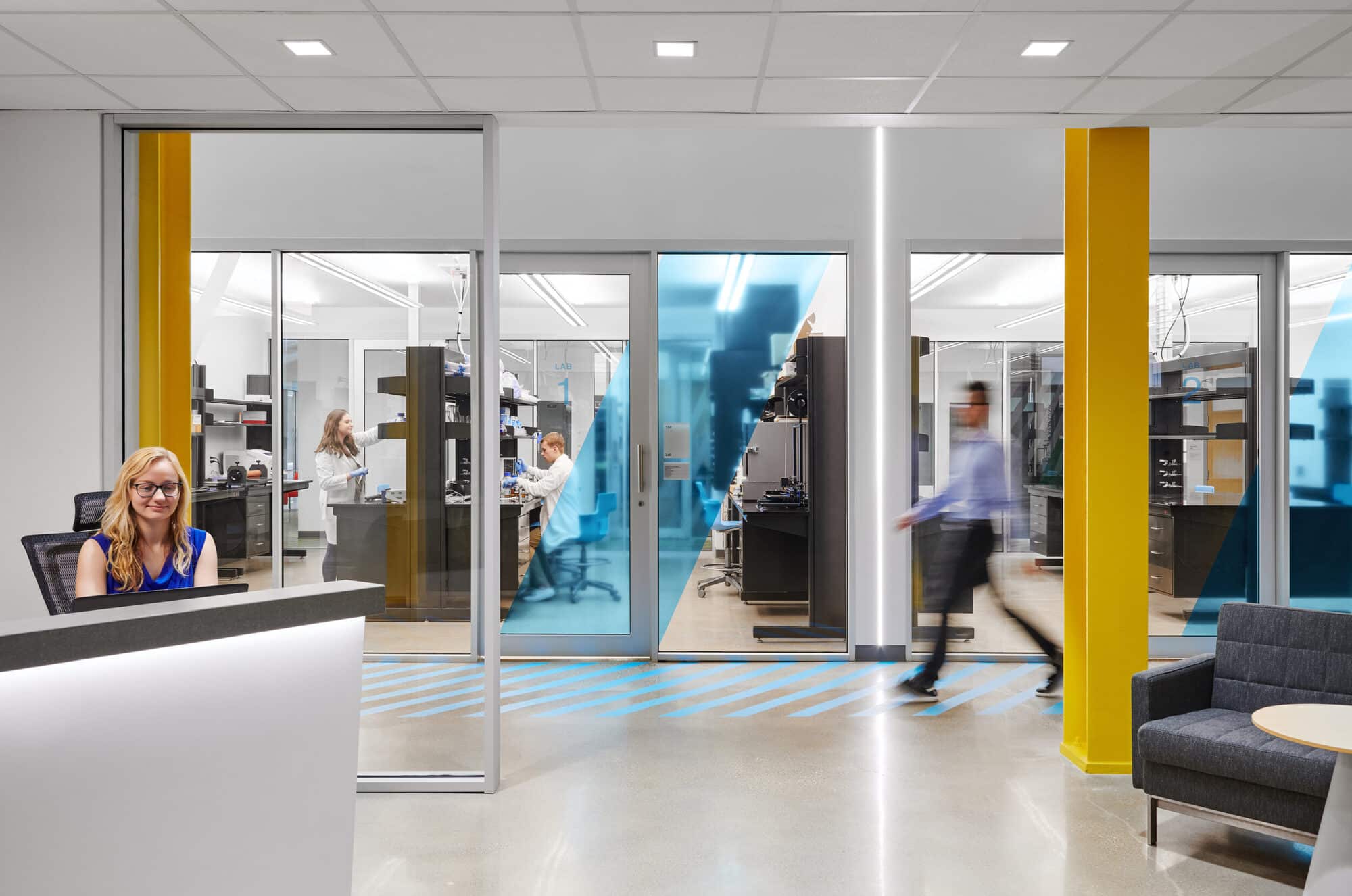JonesDBR teamed up with Gensler and REC Industries to renovate the Texas A&M University Health Technologies Innovation Building in College Station, Texas. The renovation and creation of the Health Technologies Innovation Building was spurred when Texas A&M University researchers received a National Science Foundation grant. Additionally, researchers at Rice University, the University of California at Los Angeles, and Florida International University will participate as co-investigators in the project.
The purpose-driven research goals are to develop affordable access to life-saving medical device technologies. The design team transformed the building into a cutting-edge research facility, complete with collaboration space, general wet labs, chemistry labs, a Class 1,000 ISO6 clean room, faculty offices, researcher bullpens, a multipurpose gathering space, and a reception area.
JonesDBR provided MEP and Technology engineering services for the conversion of the existing 1610 Building totaled approximately 26,800 gross square feet for Texas A&M University. The renovation of this laboratory facility included complete MEP systems, fire alarm, and the addition of fire protection. The Technology design scope included video surveillance, data cabling, access control, telecommunications room layouts and large group instructional audio-visual systems.
To make the 30-foot ceilings feel more human-scaled, our design team created 10-foot-tall jewel box structures within the building. Vertical accent lights highlight corridors and recessed linear lights are featured along the spine of lab spaces. Transitional space was thoughtfully placed at a crossroads to encourage interaction and spontaneous collaboration between researchers. Windows were punched through the building facade throughout to bring in natural lighting.
To appeal to private companies, the design aesthetic is based on a dynamic and corporate feel. The color palette was adapted from Texas A&M University’s Fish Camp brand standards, rather than the familiar maroon and white. Industrial inspired environmental graphics serve as wayfinding throughout the building and energize the space.
